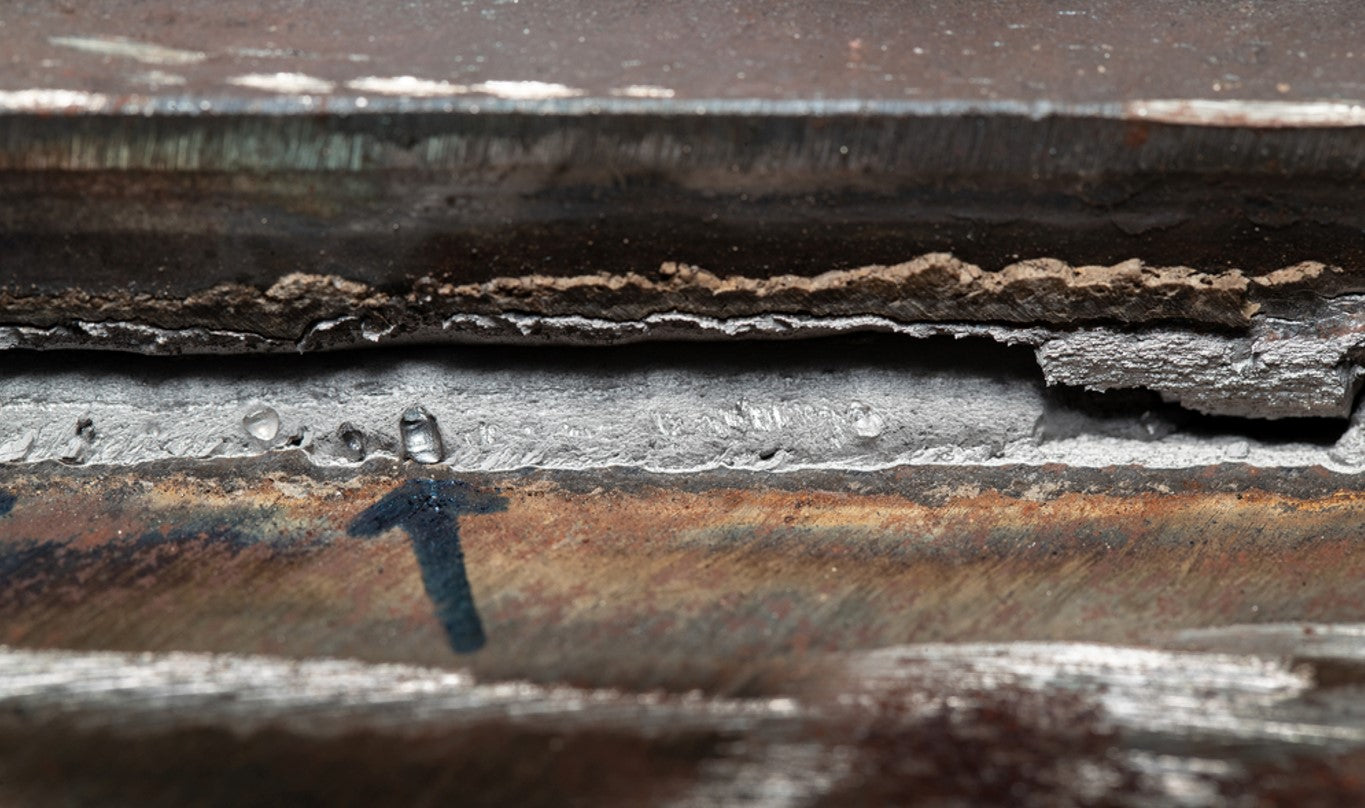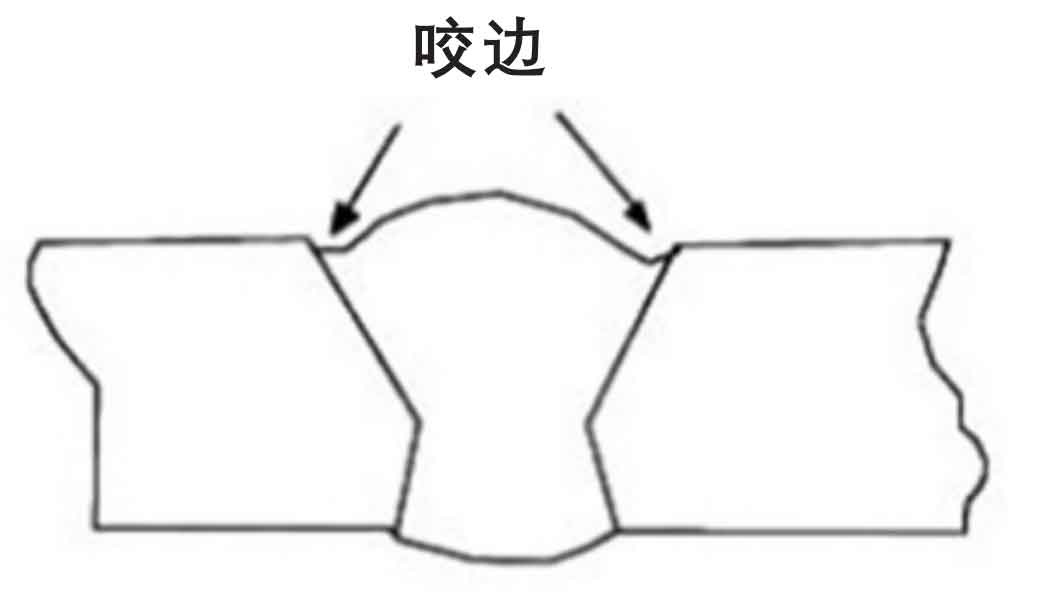Comprehending the Causes and Solutions for Undercut Welding in Metal Manufacture Processes
In the realm of metal manufacture procedures, the incident of undercut welding poses a considerable obstacle that requires a detailed understanding of its causes and feasible solutions. The elaborate interaction of various aspects during welding operations can cause this undesirable sensation, influencing the architectural honesty and overall top quality of the welded joints - Preventing weld undercut. By exploring the origin of undercut welding and checking out reliable therapeutic steps, producers can raise the criterion of their craftsmanship and ensure the production of flawless steel parts
Usual Sources Of Undercut Welding
Regularly overlooked in steel manufacture, undercut welding occurs due to various variables that demand careful focus and competence to be properly alleviated. One usual root cause of undercut welding is extreme heat input. When the heat input is expensive, it can lead to the melting and succeeding erosion of the base material along the sides of the weld joint, developing a groove or undercut. In addition, improper welding strategies, such as making use of the wrong welding angle or take a trip rate, can additionally add to undercut formation. Poor protecting gas protection is another vital variable that can lead to undercutting. Not enough gas insurance coverage fails to protect the weld pool appropriately, bring about oxidation and undercut problems. Moreover, the choice of welding specifications, such as voltage, existing, and cable feed speed, plays a considerable role in the event of undercut welding. Recognizing these typical causes is essential for executing safety nets and making certain top quality welds in metal fabrication procedures.
Effect of Incorrect Welding Parameters
Unreliable welding parameters can substantially endanger the integrity and high quality of welded joints in steel manufacture processes. The effect of wrong welding parameters manifests in different ways, leading to structural weak points and problems in the bonded elements. One vital facet influenced by improper welding specifications is the infiltration depth of the weld. Not enough heat input as a result of low welding currents or exceedingly high traveling speeds can lead to insufficient blend in between the base steels, causing insufficient joint penetration and weakened bonds. Alternatively, too much warm input brought on by high welding currents or slow traveling speeds can result in burn-through and extreme reinforcement, developing a brittle and unpredictable weld structure. Furthermore, inaccurate criteria such as improper voltage settings or incorrect electrode angles can add to irregular weld grain accounts, absence of fusion, and increased opportunities of problems like damaging. Precise attention to welding specifications is extremely important to make sure the production of high-grade welds with the desired mechanical homes and architectural honesty.
Impact of Improper Lantern Angle
Incorrect lantern angle in welding operations can significantly impact the quality and integrity of the last weld joints in metal manufacture procedures. Undercutting is a common welding issue where a groove forms along the weld toe, deteriorating the joint and compromising its architectural honesty.
A lantern angle that is also high can lead to insufficient penetration, incomplete fusion, and enhanced spatter. On the other hand, a torch angle that is as well shallow can result in too much infiltration, burn-through, and distortion of the base material. Preventing weld undercut. Correct lantern angle is essential for ensuring regular weld quality, strength, and look
To avoid undercutting and various other problems triggered by improper lantern angles, welders must be trained to maintain the appropriate lantern angle throughout the welding process. Routine tracking and modification of lantern angles throughout welding can assist achieve audio welds with marginal defects.
Role of Inadequate Welding Strategies

One more facet of poor welding techniques is incorrect weld prep work. Inadequate cleansing of the base steels, wrong joint style, or insufficient edge preparation can all add to damage welding. Insufficient shielding gas protection or making use of the wrong kind of gas can result in insufficient fusion and the development of undercut flaws.
To my sources attend to the role of inadequate welding strategies in steel manufacture processes, it is essential to supply detailed training for welders. Proper education and learning on welding specifications, joint prep work, and shielding gas choice can aid protect against undercut welding and make sure top notch welds in metal fabrication tasks.
Efficient Solutions for Undercut Welding
Attending to undercut welding in metal construction calls for executing reliable solutions to enhance weld quality and architectural integrity. Among the primary remedies to battle undercut is to visit site change welding parameters such as voltage, existing, and travel speed to ensure proper warm input and blend. By fine-tuning these setups, welders can stop too much melting of the base metal and filler material, reducing the probability of undercut formation.
Furthermore, proper joint preparation is vital in stopping undercut. Making sure clean base steel surfaces without contaminants and making use of the ideal bevel angle can assist advertise better weld penetration and lower the risk of undercut - Preventing weld undercut. Utilizing appropriate welding techniques, such as oscillating the lantern or weaving, can also aid in distributing heat evenly and loading the weld joint appropriately, reducing the opportunity click to investigate of undercut flaws
Additionally, picking the proper welding consumables, including electrodes and filler steels, is vital in mitigating undercut. Using products with ideal chemical structures and mechanical homes can add to achieving sound welds with minimal undercut. Regular inspection and quality assurance steps should additionally be carried out to spot and resolve undercut problems without delay, making certain the total honesty of fabricated steel elements.

Conclusion
To conclude, understanding the causes and remedies for undercut welding in metal construction processes is vital for accomplishing top notch welds. By addressing typical causes such as wrong welding specifications, inappropriate torch angle, and inadequate welding methods, welders can avoid damaging and make sure strong, long lasting welds. It is essential to take notice of these elements and execute reliable remedies to boost the general welding procedure and last product top quality.
